River Wye viaducts
River Wye viaducts



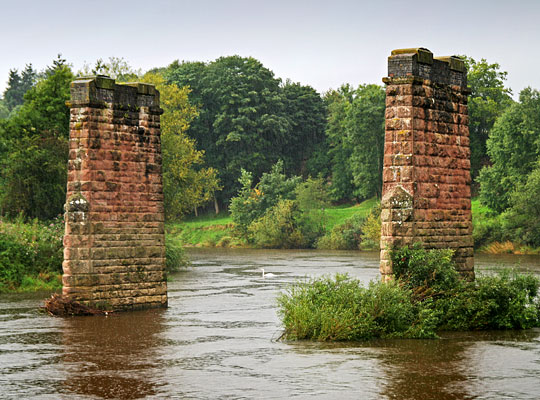
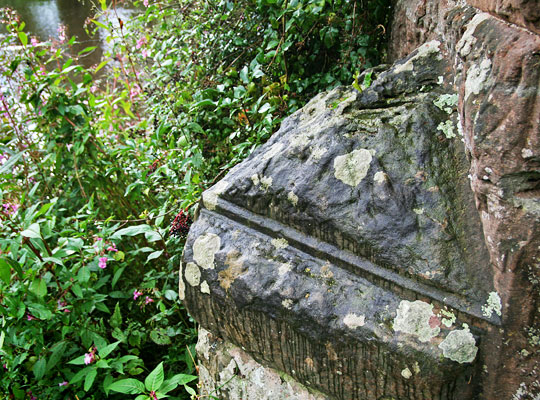
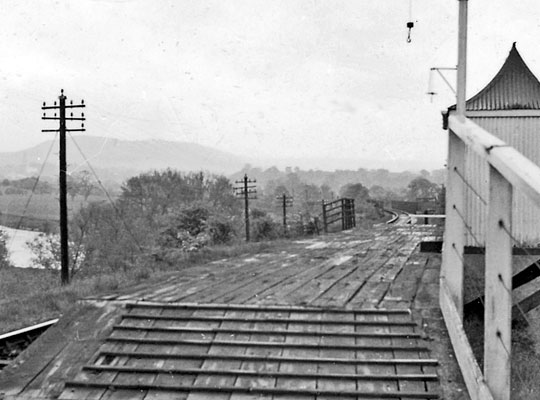
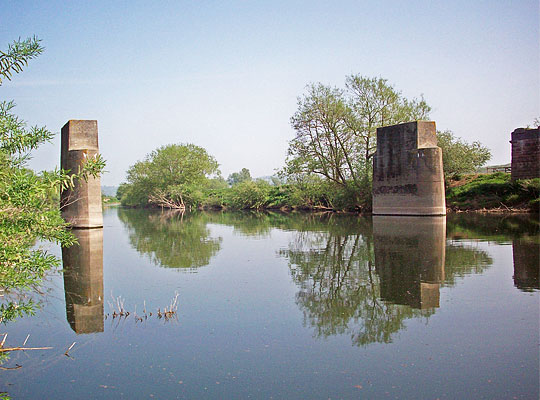
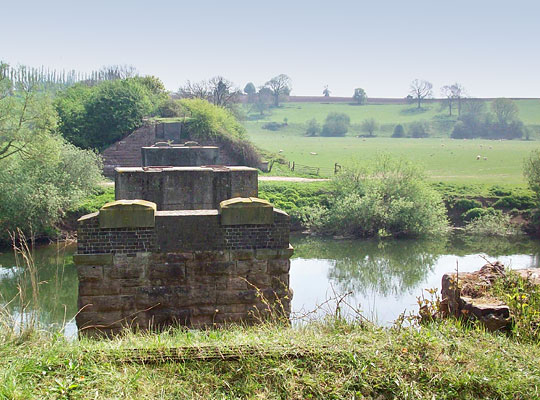
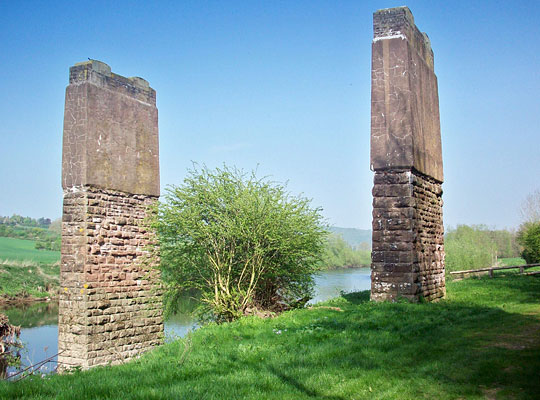
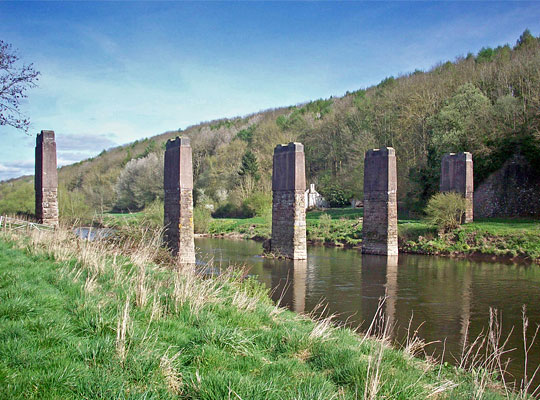










Benefiting from the exceptional engineering prowess of Isambard Kingdom Brunel, the Hereford, Ross & Gloucester Railway (HR&GR) plotted a 22½-mile course from Grange Court Junction to Hereford, up the Wye valley. Construction was enabled by an Act which overcame its last Parliamentary hurdle on 12th June 1851, although the route had been surveyed as part of previous schemes as early as 1844.
A partnership of Thomas Brassey, Morton Peto and Edward Betts signed contracts to execute the works at a total value of £230,000. The initial focus of their exertions was towards the south end, getting underway at Lea Tunnel on 2nd February 1852; elsewhere there were delays in obtaining the necessary land consents.
The route was built for a single broad-gauge line with an intermediate passing loop at Ross-on-Wye. The track was laid with Barlow’s patent 20-foot rails, shaped like an inverted ‘V’ and weighing 90lbs per yard. These were sunk into the ballast and secured with transverse iron ties at each end.
Trains began serving a temporary terminus at Hopeswood – five miles up the line from Grange Court – on 11th July 1853. However the section northwards proved particularly challenging due to the meandering River Wye – which it crossed four times – and intervening spurs of high ground, requiring four tunnels with a collective length of 2,626 yards. The average gradient was 1:70. In total, 36 bridges had to be built, 14 over and 22 under the railway.
Whilst good progress was generally made with the river viaducts at Backney, Strangford and Carey, heavy rainfall and an associated rapid change in water level could bring setbacks. On 28th June 1853, the unfinished central pier of a fourth structure at Rotherwas was washed away when its protecting timber cofferdam gave way and the workings inundated. The cost to the contractor was estimated at £100.
Captain Henry Tyler inspected the line for the Board of Trade over two days in May 1855. He described the river viaducts as being “constructed of trussed timber beams, supported on stone piers and abutments, and braced by wrought iron tension rods, 1½” in diameter.” Each structure comprised six 44-foot spans. To test them, two tank engines – named Theocritus and Buffalo – were provided by the railway company, their combined weight being 63 tons and a length of 53 feet between buffer planks.
Tyler observed that “with this load, deflections were ordinarily produced in the beams of 0.24 inches, but, in some cases, in which it was evident that the iron bolts required to be screwed up, as much as 0.42 inches, and, in one case, 0.48 inches. An order was given in my presence for the tightening up of all the bolts of these viaducts; and though I should have preferred to see them of wrought iron rather than of wood, I have no doubt of their stability, as long as the timber continues to be sound and the bolts are kept to their proper strain.”
A formal ceremony to open the through line to Hereford took place on 1st June; the inaugural train – sporting a Union Jack on its funnel – was greeted in Ross by a crowd of 5,000 townsfolk. The HR&GR amalgamated with the Great Western Railway in July 1862, the latter taking on responsibility for operating the line and receiving 60% of the receipts for its troubles.
The line was converted from broad to standard gauge over five days in the middle of August 1869, a replacement coach service being provided whilst the trains were out of action. The track was divided into quarter-mile sections and tackled by gangs of around 20 platelayers, the process generally taking less than four hours.
As was the case elsewhere, deterioration of the viaducts’ timberwork eventually prompted its replacement. It seems likely that this was effected during 1898 and necessitated raising the pier height by several feet, adding sections of brickwork above the existing masonry. Some of the piers were either partly or wholly encased in concrete.
The work was not without incident. On the morning of Sunday 17th July, around 50 men were using a 40-ton rail-mounted crane to lift out the old superstructure of Carey Viaduct’s fifth span and replace it with iron girders. However, at 06:45, a brake failure caused the crane to overbalance and fall 60 feet to the river bed. Several men jumped clear but a long chain, attached to the crane, crashed onto the deck, violently striking four members of the gang. They were taken by train to hospital in Hereford. Some damage was caused to both the permanent way and the structure’s remaining timbers.
Severe winter floods in 1867 had provoked some concern for the stability of Backney Viaduct, but one of the piers of Strangford Viaduct did collapse in March 1947, water currents having undermined it. The two spans it supported were brought down as a consequence. Repair work took several months and was completed without the need to rebuild the lost pier, a longer span being installed instead.
Passenger traffic along the line was withdrawn on 2nd November 1964 although the section between Grange Court and Ross continued to handle freight until 1st November 1965. Subsequent to their closure, scrap merchants salvaged the viaducts’ girders, leaving only the piers as a poignant reminder of Brunel’s wonderfully engineered railway up the Wye valley.
(Ben Brooksbank’s photo from Geograph is used under this Creative Commons licence.)







